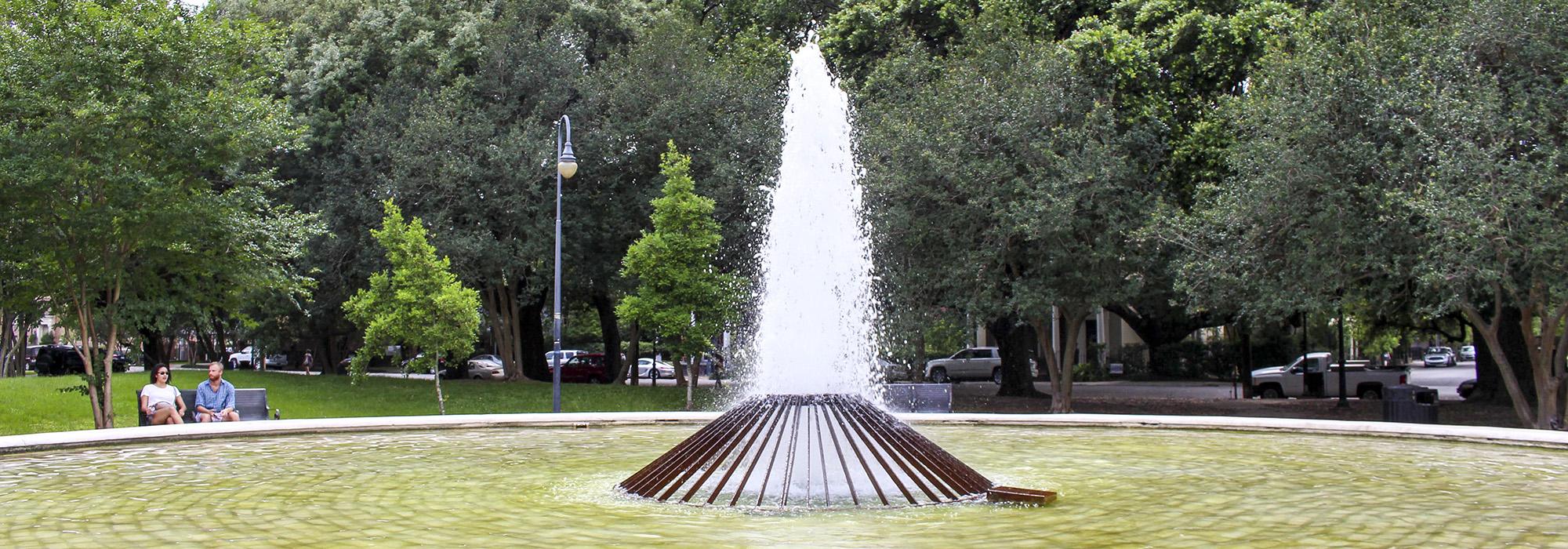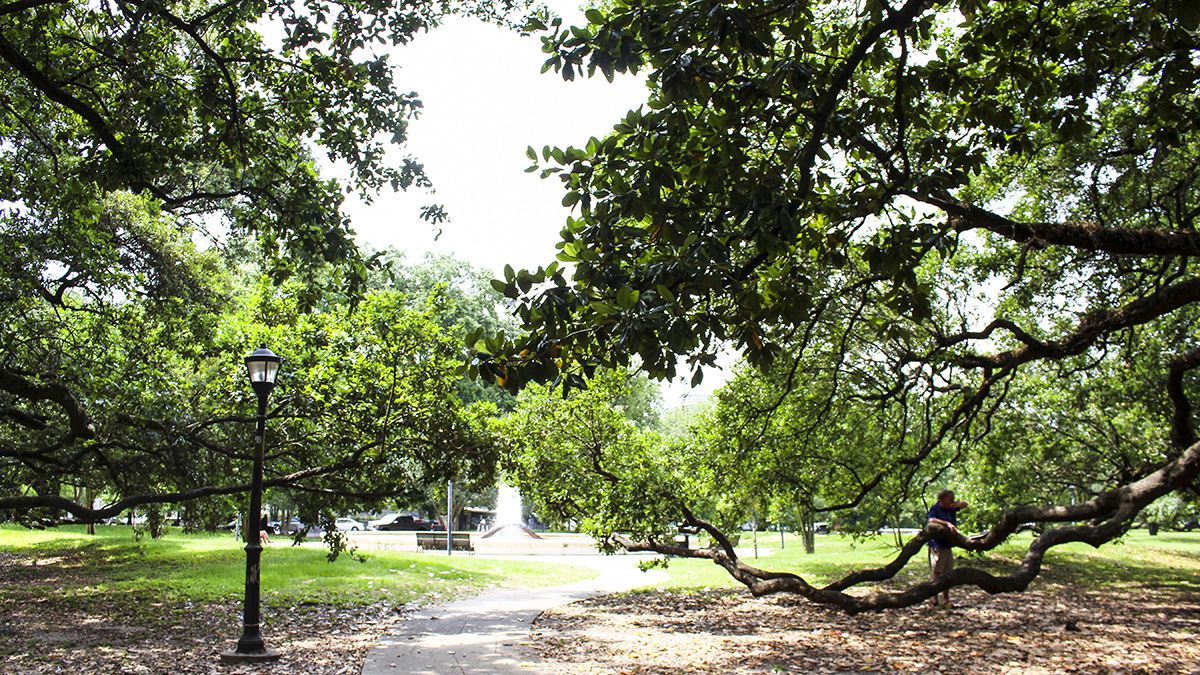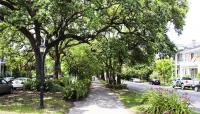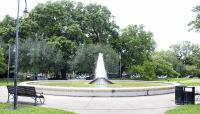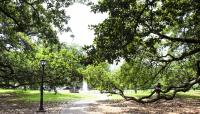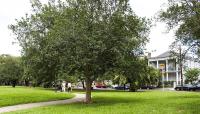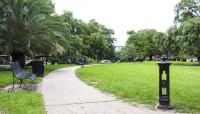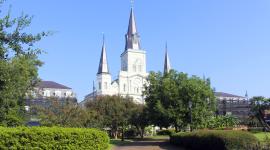Landscape Information
Following the 1803 Louisiana Purchase, the increasing number of Americans settling in New Orleans moved upriver of the Vieux Carré to create their own residential neighborhoods. Madame Delord-Sarpy hired Barthélémy Lafon, a French architect, engineer, and surveyor, to subdivide her plantation into a new Faubourg, or suburb, beyond the city’s colonial boundaries. Envisioning a classical-style neighborhood, Lafon’s 1806 design laid out an oblong grid of city blocks with a roughly triangular-shaped park at its center that was intended to be the focal point of the community’s social and intellectual life. The streets created out of these previously Jesuit-owned plantation lands were named for the nine muses of Greek mythology; the name of the three-acre park derives from a planned, though never-constructed, Roman-style Collesée, or coliseum. Lafon accomplished the drainage necessary on the swampy lands by designing two tree-lined canals (later filled) extending along the bordering streets of the park that emptied into a semi-circular basin at the Melpomene Street end. The park was planted with water oaks, tallow, and China trees. An improvement project in 1895 called for the installation of curbing, two fountains connected by curved walks, a fish pond, and three plastered-over-brick circular basins. In the mid-1970s, subsequent to renewed interest in the neighborhood and its architecture and the 1972 formation of the Coliseum Square Association, a park restoration completed by the landscape architecture firm Charles Caplinger and Associates introduced new walks, paved areas, lighting, benches, and two water features, one of which remains. Coliseum Square is part of the Lower Garden District, which was listed on the National Register of Historic Places in 1972.



